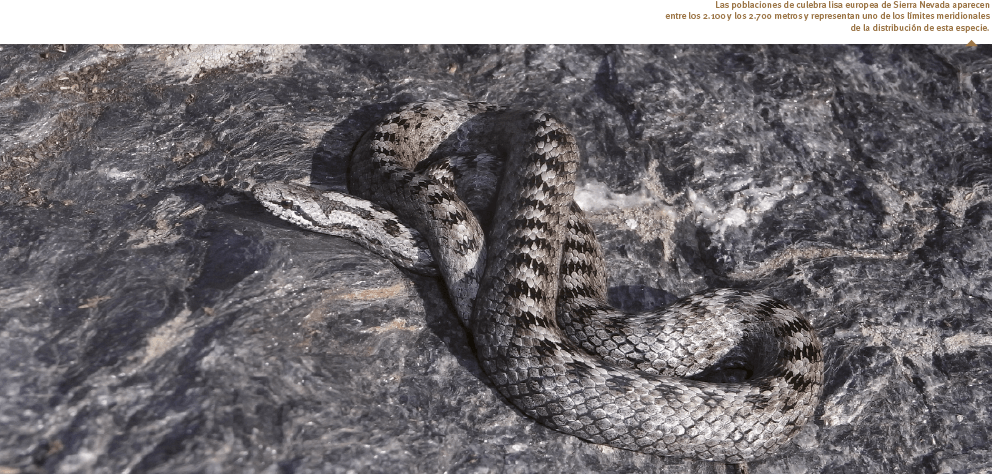Aims
The main aims of the monitoring of reptiles in Sierra Nevada were:
- to analyse the distributions of the 20 species present
- to evaluate preliminarily the effects of global change on their populations;
- to analyse the set of threats.

Method and effort
For the field samplings, the species richness and number of individuals were taken into account. The samplings were based on three censuses taken for 45 min by two observers (or for 90 min by one observer) by a UTM grid with squares of 5 km x 5 km. Only squares with less than 50% of the surface area included in the protected area were considered (n=71). For the rest of the squares, one or two samplings were made according to the variety of habitats present (n=27). Thus, 251 samplings were made, distributed throughout the National and Natural Park. The data were used to determine the current chorological distribution of herpetofauna in Sierra Nevada.
The censuses consisted of looking for reptiles in appropriate zones. Refuges were carefully uplifted and afterwards placed in their original position to minimize possible alterations of these microhabitats. This technique proves appropriate for determining the presence and abundance of the different reptile species.
Periodicity
The field work was performed in 2009 and 2010. Afterwards, efforts will continue for strategic areas, periods, and species.